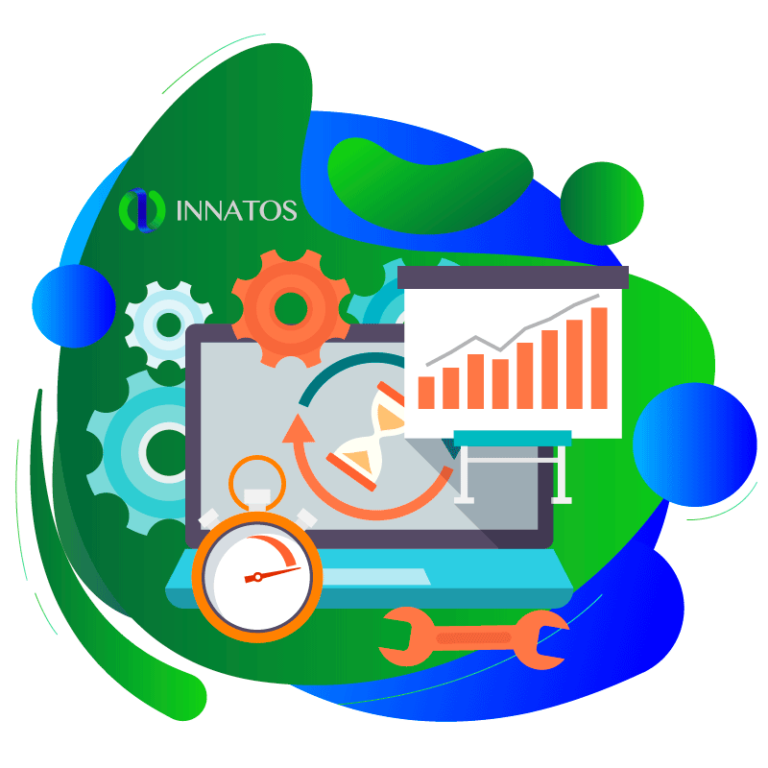Value Stream Mapping
So, let me paint a picture for you. Imagine you’re on a journey to make your business processes as sleek and efficient as possible. That’s where Value Stream Mapping comes into play. It’s like pulling out a magnifying glass and examining every nook and cranny of how your product or service transitions from start to finish. But it’s not just about spotting the snags; it’s about streamlining the whole process, cutting out waste, and making everything run smoother and faster. With Value Stream Mapping, I’ve found a way to really get to the heart of any inefficiencies and figure out the best ways to make improvements. Trust me, it’s a game-changer for any business looking to up their efficiency game.
Definition of Value Stream Mapping
Explanation of Value Stream Mapping
So, let me take a stab at breaking down what Value Stream Mapping (VSM) is all about. Simply put, VSM is a visualization tool primarily used in Lean methodologies to analyze and design the flow of materials and information required to bring a product or service to a consumer. It’s like drawing a map that shows where you’re starting from, where you want to end up, and all the stops (processes) you need to make along the way. The beauty of it is that it not only highlights the current state but also helps in designing the future state of processes, eliminating inefficiencies along the way.
The Importance of Value Stream in Lean Manufacturing and Lean Software Development
In the world of Lean Manufacturing and Lean Software Development, understanding your value stream is crucial. It’s all about adding value to your customer without wasting resources. For manufacturers, this means streamlining production processes to minimize waste and optimize product delivery. In software development, it’s about enhancing the flow of project tasks to deliver quality software as efficiently as possible. Both realms benefit hugely from VSM, as it provides a structured way to visualize workflows and pinpoint non-value-adding activities.
Differences Between Value Stream Mapping and Process Mapping
Now, you might be thinking, “Isn’t Value Stream Mapping just another form of process mapping?” Well, yes and no. While both are visualization tools, they focus on different aspects. Process mapping is more about documenting each discrete step in a process, often in detail, without necessarily focusing on value delivery. VSM, however, is broader. It looks at the flow from start to finish with an eye specifically for value delivery and waste elimination. It’s kind of like comparing a detailed city map to a highway map; both useful, but with different focuses.
Purpose and Benefits of Value Stream Mapping
Identifying and Reducing Waste in Processes
One of the main reasons I’ve used VSM is to spot and cut out waste in processes. Waste, or ‘Muda’ as it’s called in Lean, can be anything from unnecessary steps, excessive inventory, delays, or defects. By mapping out the whole value stream, it becomes easier to see where things are getting bogged down or where resources are being squandered.
Improving Product Flow and Efficiency
Following closely on the heels of waste reduction is the improvement of product flow and overall efficiency. VSM helps in identifying bottlenecks or interruptions in the flow of work. Once these are known, it’s like having a cheat sheet for where to focus improvements, making the entire process smoother and more efficient.
Enhancing Communication Between Different Departments
Something I’ve observed is how VSM can break down silos between departments. When you map out the value stream, everyone – from production to sales to support – gets a clear picture of how their part fits into the bigger picture. This understanding fosters better collaboration and communication across departments, something that’s often overlooked but is vitally important.
Setting the Foundation for Continuous Improvement
Lastly, adopting VSM is not a one-off activity. It sets the stage for continuous improvement. By having a clear, visual representation of your current processes, it becomes easier to revisit and revise them as you implement changes, ensuring that improvement is an ongoing process.

This image is property of images.pexels.com.
Key Components of a Value Stream Map
Customer and Supplier Icons
At the start and end of every value stream map, you’ll find the customer and supplier icons. These are key because they remind everyone who we’re ultimately serving (the customer) and where we’re getting our essential inputs (the supplier). It helps in framing the entire process from a value perspective.
Process Activity Boxes
Then there are the process activity boxes. These are the meat of the map, detailing each step in the process where value is added. They’re crucial for understanding how inputs are transformed into outputs through various stages.
Inventory and Waiting Times
Inventory levels and waiting times are also depicted, often causing a raised eyebrow or two. These indicate where work is piling up or where delays are occurring, highlighting areas ripe for improvement.
Information Flow Arrows
Information flow arrows show how information moves through the system, which is just as important as the material flow. It’s enlightening to see where decision points are and how information is communicated across departments.
Timeline and Data Boxes
Lastly, the timeline and data boxes provide the quantitative backbone to the map, offering data on cycle times, throughput rates, and so on. This data is invaluable for setting goals and measuring improvement.
Steps in Creating a Value Stream Map
Selecting the Product or Service to Map
The first step is picking the product or service you want to map. This might seem straightforward, but it’s important to choose something that’s representative of your broader operations or has particularly nagging issues you want to address.
Gathering the Necessary Data and Tools
Next up, you need to gather data and decide on the tools you’ll use for mapping. This involves getting your hands on production schedules, process times, inventory levels – all the nuts and bolts data. And while you can technically use a whiteboard and sticky notes, there are software tools out there that can make this easier.
Mapping the Current State
With data in hand, you then map out the current state of your value stream. This is where you document how things are currently done, warts and all. It can be a bit of a reality check, but it’s the only way to accurately identify areas for improvement.
Identifying Waste and Opportunities for Improvement
Once your current state map is laid out, it’s time to play detective and hunt down waste and opportunities for improvement. This is where you look for anything that doesn’t add value from the customer’s perspective.
Designing the Future State Map
After pinpointing the inefficiencies, the fun part begins: designing the future state map. This is where you get to reimagine the process, eliminating waste and optimizing flow to better serve the customer.
Implementing Changes and Monitoring Progress
The final step is putting your plan into action and then closely monitoring the results. It’s crucial to track the effect of changes on your process and make further adjustments as necessary. This cycle of implementing and monitoring is what drives continuous improvement.

This image is property of images.pexels.com.
Examples of Waste in Value Streams
Overproduction and Excess Inventory
One of the most common forms of waste is overproduction, leading to excess inventory. It ties up resources and takes up space, not to mention the risk of spoilage or obsolescence.
Unnecessary Transportation and Motion
Then there’s the waste from unnecessary transportation and motion – moving things around more than needed or employees having to walk extra distances. These might seem minor, but they add up quickly in terms of time and resources.
Defects and Rework
Defects and the ensuing rework are another major area of waste. Not only does it waste materials and time, but it also impacts customer satisfaction and trust.
Overprocessing and Waiting Times
Lastly, overprocessing and waiting times are classic examples of waste. Doing more to a product than what the customer requires or having long downtimes between processes are surefire ways to inefficiency.
Software Tools for Value Stream Mapping
Benefits of Using Software Tools Over Manual Mapping
While there’s something to be said for the tactile feel of manual mapping with post-it notes and markers, software tools offer distinct advantages. They can save time, provide templates and icons, and make it easier to share and modify maps. Plus, they often include features for analyzing the data directly within the tool, which is super handy.
Popular Software Tools for Value Stream Mapping
There are several software tools out there designed specifically for VSM. Names like Lucidchart, Microsoft Visio, and Miro come to mind. Each has its strengths and weaknesses, depending on what you’re looking for – some are more intuitive, while others offer deeper analytical capabilities.
Comparison of Features and Capabilities
When comparing these tools, you’ll want to look at ease of use, the flexibility of the mapping environment, built-in templates and symbols specific to VSM, and analytical features. Your choice will likely hinge on the nature of your projects and personal or company preferences.

This image is property of images.pexels.com.
Challenges in Implementing Value Stream Mapping
Resistance from Employees
One of the hurdles I’ve run into is resistance from employees. Change is hard, and VSM can reveal uncomfortable truths about inefficiencies. It’s crucial to manage this by emphasizing the benefits and involving team members in the mapping process.
Lack of Understanding or Training
Another challenge is the lack of understanding or training in VSM principles. Without a solid grasp of what you’re trying to achieve and how to go about it, the exercise can become a box-ticking activity rather than a valuable improvement tool.
Difficulty in Tracking and Measuring Changes
Tracking and measuring the impact of changes is also tricky. It requires setting clear, measurable targets and having systems in place to collect and analyze data regularly.
Sustaining Improvements Over Time
Finally, sustaining improvements over time can be difficult. It’s easy to fall back into old habits, so continuous monitoring and a culture of improvement are necessary to keep the momentum going.
Real-world Applications of Value Stream Mapping
Case Studies in Manufacturing
In manufacturing, I’ve seen VSM transform operations by identifying major bottlenecks in production lines, leading to dramatic reductions in lead times and inventory levels. Real-life case studies often highlight the shift from push production to demand-driven models as a result of VSM.
Value Stream Mapping in Healthcare
Healthcare is another area where VSM has made significant inroads. From reducing patient wait times to streamlining back-office processes, the impact of applying Lean principles through VSM in healthcare settings is profound.
Improvements in Software Development Processes
In software development, VSM has been used to enhance agility and reduce time-to-market. By identifying inefficiencies in the development lifecycle, teams have been able to implement more efficient working practices, like shifting from waterfall to agile methodologies.
Lean Management in Service Industries
Even in non-manufacturing settings, like service industries, VSM has proved invaluable. Whether it’s reducing loan processing times in a bank or improving order fulfillment in a retail operation, the principles of VSM are universally applicable.
Future State Value Stream Mapping
The Process of Designing Future State Maps
Designing future state maps involves envisioning an optimized process that eliminates identified wastes and inefficiencies. It requires thinking outside the box and challenging current practices, always with the goal of better serving the customer.
Setting Achievable Goals and Objectives
Setting achievable goals and objectives is critical in this stage. They should be ambitious yet realistic, providing clear direction for the improvements you’re aiming to make.
Transition Plans from Current to Future State
Developing a robust transition plan is essential for moving from current to future state. This plan outlines the steps, timelines, and responsibilities for implementing changes, ensuring that the vision becomes a reality.
Incorporating New Technologies and Methodologies
In designing the future state, it’s also an opportunity to incorporate new technologies and methodologies that can further enhance efficiency and value delivery. Keeping an eye on emerging trends and innovations can offer additional ways to improve processes.
Best Practices for Effective Value Stream Mapping
Securing Commitment from Top Management
For VSM to be successful, securing commitment from top management is a must. Their support can pave the way for resources, facilitate cross-departmental collaboration, and drive home the importance of the initiative.
Involving a Cross-Functional Team
VSM should involve a cross-functional team that covers every aspect of the value stream. This diversity of perspectives ensures a more comprehensive understanding and ownership of the process and its improvements.
Focusing on Customer Value and Experience
Throughout the VSM process, the focus should always remain on customer value and experience. Every decision and improvement should be considered through the lens of how it serves the end customer.
Continuously Revisiting and Updating the Value Stream Map
Finally, VSM is not a one-and-done activity. As improvements are made and business conditions change, it’s important to continuously revisit and update the value stream map. This ensures that processes remain efficient and aligned with customer needs.
In wrapping up, value stream mapping is a powerful tool in the Lean arsenal, offering a clear and comprehensive way to visualize and improve processes. Whether in manufacturing, healthcare, software development, or any other industry, the principles of VSM can lead to significant enhancements in efficiency, productivity, and customer satisfaction. By following the steps and adhering to best practices, organizations can navigate the challenges and reap the benefits of this transformative methodology.







